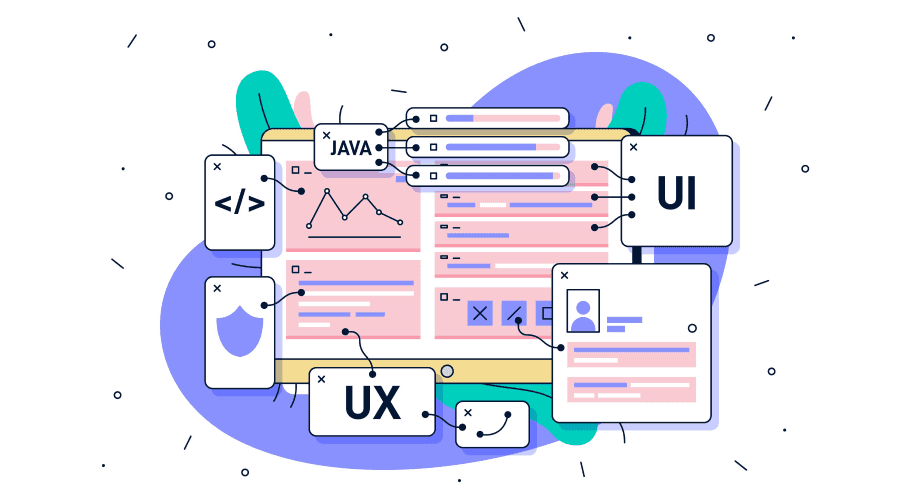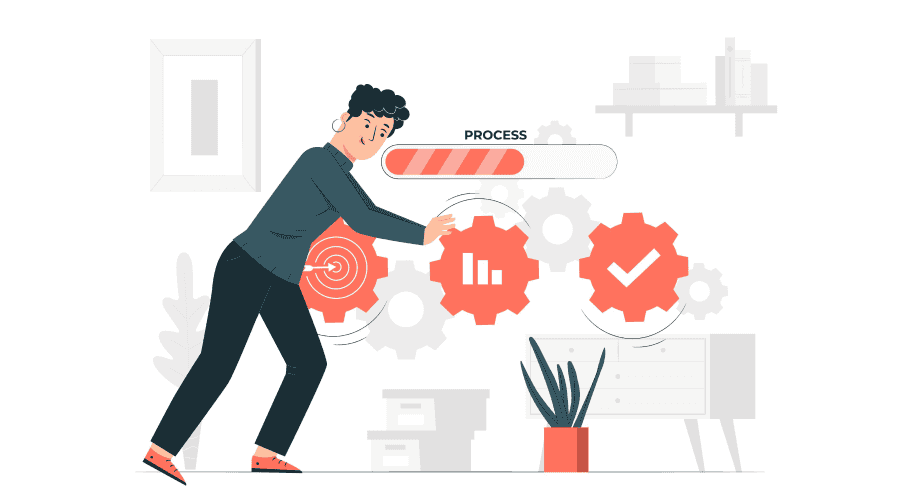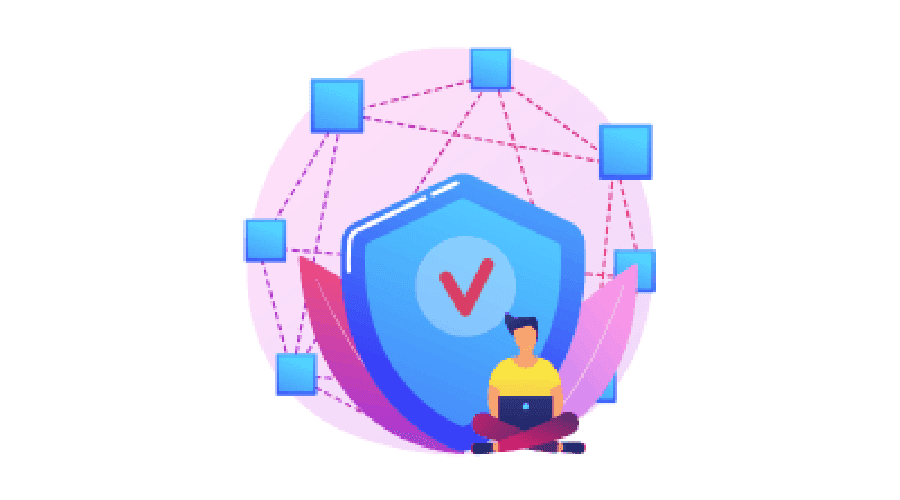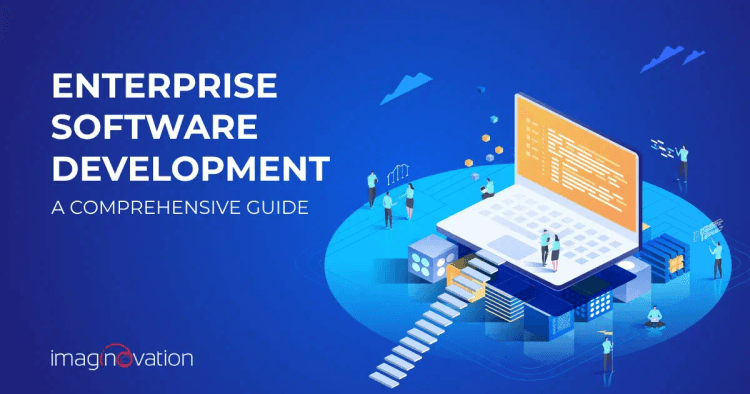The global Software Industry has rapidly evolved with new technologies.
Your business relies on software, especially Enterprise Software, for tasks like ERP, CRM, Supply chain management, and more.
Enterprise software is the largest software market segment, steadily growing at a 6.73 percent CAGR to reach 376.40 billion USD by 2028.
Given these impressive numbers, it's time for businesses to explore investments in enterprise software.
To stay competitive and succeed in 2023, you must have a good understanding of enterprise application development.
If you're considering building enterprise software but need a starting point, here's a comprehensive guide to help.
It simplifies the complex world of enterprise software development and offers insights into the latest trends.
Let's read on!
Understanding Enterprise Software Development
First things first - What is enterprise software?
Enterprise software refers to customized solutions designed for businesses to efficiently manage tasks like finances, customer relations, operations, etc.
It is typically a complex program that has many different components and capabilities, including the ability to handle large amounts of data and provide feedback in real-time.
Some popular examples are -
- Enterprise Resource Planning (ERP) solutions like SAP and Oracle.
- Project Management applications such as Asana.
- Customer Relationship Management (CRM) solutions like Salesforce.
- Supply Chain Management software like IBM Sterling.
- Business Intelligence tools such as Tableau and Power BI.
- Collaboration and Communication tools like Microsoft Teams and Slack.
Enterprise software development is, thus, the process of creating applications that companies or organizations use to boost efficiency and productivity.
Business software development is different from regular software development. This is because it needs to offer a number of additional features and specialized tools meant especially for enterprise, corporate, or facility workflows.
With enterprise software development, you can build secure, reliable, and cost-effective business solutions that are easy to maintain, scale, and integrate and are …well, enterprise-worthy.
Enterprise software development is a multi-step process that requires the expertise of many different professionals and can take anywhere from six months to two years to complete.
Steps in Enterprise Software Development
Building enterprise software is a little bit like building a house.
You start with a plan, create a strong foundation, choose the suitable material (technology in this case), and add rooms (features in this case).
Here are the key steps involved in the enterprise software development process.
Requirements Analysis
During this stage, your tech consulting partner collaborates with your team to comprehend your business goals, needs, and challenges.
They aim to define the software's purpose and problem-solving capabilities, interview key stakeholders, and ensure feasibility.
This phase involves various activities, including documenting business processes, assessing IT capabilities, and analyzing broader business strategies like growth and IT budgets. These factors influence architectural and technological choices.
High-level functional and technical requirements for the software are established, setting the stage for development.
Additionally, the requirements analysis assesses potential risks of implementing the new system, such as productivity loss and downtime during the transition to digital workflows and user training.
This thorough process results in a clear plan and roadmap for the rest of the development process.
Planning and Designing the Solution
During this stage, the team outlines the software development project roadmap, goals, budget, and tasks.
A Project Manager, Business Analyst, and Project Owner collaborate to research the market, competition, and project requirements, often resulting in an early MVP.
The System Architect then focuses on software architecture, emphasizing usability from an end-user perspective, including enterprise application, integration, and architecture design. Prototyping plays a critical role.
The phase also entails defining the architectural style, technology stack, and development methodology, with an emphasis on the next step: UI and UX design.
Additionally, data flow and transformation, communication protocols, and security enhancements are determined.
The team readies a comprehensive QA strategy to validate system interactions, backup and recovery mechanisms, and performance within bandwidth limitations.
UI & UX Design

Designing the User Experience (UX) and User Interface (UI) for an enterprise app should be a thoughtful and user-centric process.
In this stage, UX designers and Business Analysts team up for UX research, diving into the target audience's needs, goals, and mental models.
UX designers outline user interactions and information architecture, identifying digital touchpoints.
They craft wireframes to illustrate content layout and functionality and then consolidate them into an application prototype for testing.
Upon successful prototype testing, UI designers convert them into vibrant graphic interface mockups, ready for handover to frontend developers.
Software Development.
In this stage, developers bring the software to life by writing the code based on the design and requirements. Backend developers handle the inner workings, using the chosen technology stack to build the software, ensuring functions, database connectivity, APIs, and seamless communication with other business applications.
Frontend developers focus on the user interface, using HTML/CSS and JavaScript to create the visual elements that users interact with. Integration with existing systems and databases is essential for seamless data flow and cohesive operation with other tools.
This phase transforms the project plan and design into a functional, reliable software solution aligned with your enterprise's goals.
Testing
Rigorous testing ensures the software meets defined requirements and functions as intended.
The QA team conducts a comprehensive range of tests, including functional testing to verify the software's intended tasks, usability testing for user-friendliness, and performance testing to assess responsiveness under various conditions.
Additionally, security testing safeguards enterprise data, while compatibility testing ensures seamless performance across different platforms and devices.
The software testing phase is iterative, with findings leading to necessary adjustments and retesting.
Successful testing is critical to ensure the enterprise software operates as expected and aligns with organizational requirements.
Enterprise Data Migration
During the data migration stage of enterprise software development, data from existing systems and other sources is transferred to the new software.
This process ensures that historical data, user information, and essential business records are seamlessly integrated into the new system.
Here's what you should do at this step:
- Data Assessment - Begin by assessing the existing data to understand its volume, quality, and structure. Identify and address issues like inaccuracies, inconsistencies, or duplicates.
- Data Mapping - Create a detailed plan that outlines how data from the old system will be mapped to the new one. Specify which data elements will be transferred, how they will be formatted, and where they will be stored.
- Data Cleansing - Ensure data accuracy by cleansing the data, rectifying inaccuracies and inconsistencies, and removing duplicate entries.
- Data Extraction - Extract the selected data from the old system, transforming it as necessary to align with the format and structure required by the new system.
- Data Loading - Load the transformed data into the new enterprise software's database.
- Data Verification - After loading the data, verify that the transfer was successful and that data integrity is maintained.
Deployment

The deployment phase is a critical stage in enterprise software development, marking the transition to real-world use. During this phase, several key steps are taken:
- Configuration and Setup - The software is configured and set up in the target environment, including the installation of necessary components, database configuration, and system dependency checks.
- Testing - Testing is performed in the production environment to ensure the software operates as expected and to uncover any previously undetected issues.
- Data Migration - If needed, data migration takes place during this phase. Data from older systems is transferred to the new software, with data integrity verification to ensure alignment with system requirements.
- User Training - Users and administrators receive training to effectively use and manage the software, facilitating a smooth rollout and adoption.
- Rollout Strategy - A strategy is devised for introducing the software to users. This may involve a phased approach, gradually rolling out to specific departments, or a full-scale deployment across the entire organization.
The deployment phase is an essential step in ensuring that the software functions optimally in the organization's operational environment.
Regulatory Compliance Assurance
Here, you must ensure compliance of your enterprise software with government or industry regulations, such as HIPAA, CGMP, GLBA, PCI DSS, or GDPR. Do follow these steps:
- Gather Documentation - Collect all relevant documentation created throughout the software development process, from design to verification and validation.
- Comprehensive Proof - Use this documentation to demonstrate that the software and its development lifecycle fully adhere to the essential requirements of the applicable standard or regulation.
This step is crucial to ensure compliance with industry and government guidelines.
Emerging Trends in Enterprise Software Development
Enterprise software has made great strides in recent years, and trends continue to push the boundaries of technology.
Automation and machine learning are doing more human tasks. Mobile applications are getting increasingly intelligent. Cloud computing solutions have opened the gates to technologies that were inaccessible in the past due to hardware limitations.
Here are the latest trends and technologies shaping the future of enterprise software development in 2023.
Microservices Architecture
Microservices architecture is trending in enterprise software development due to its ability to break down applications into small, independent services, each with a specific focus.
This approach enables developers to create, deploy, and scale services independently, resulting in a highly decoupled system that's easily upgradeable.
In contrast to traditional monolithic architectures, where all services are tightly integrated, microservices offer greater flexibility, making it easier for teams to work on different features concurrently and implement changes without concerns about affecting other system components.
This trend reflects the growing preference for agile and scalable software development practices in the enterprise world.
Low Code/No Code Development
As per the State of Software Development reports, 35.05 percent of respondents have no plans to adopt a new programming language in the coming 12 months.
Drag-and-drop editors, popular for their association with low-code development, have opened up application development to non-programmers, allowing them to create and implement applications without coding.
Furthermore, no-code solutions are known for their efficiency, with development being 10 times faster than on traditional platforms and using 70 percent fewer resources. (Source) This cost-efficiency is driving businesses to embrace low-code and no-code approaches for enterprise software development.
Looking ahead, these application development methods are expected to continue gaining traction.
Cloud-native Development
Cloud-native development is a leading trend in enterprise software development, offering scalability, flexibility, agility, and cost-efficiency.
This approach empowers organizations to swiftly adapt to changing demands while optimizing resource usage.
Cloud-native applications prioritize resilience, ensuring high availability and disaster recovery while leveraging the latest cloud innovations to enhance competitiveness.
With tools like Docker, Kubernetes, Git CI/CD, and Node.js, cloud-native development streamlines application development for efficiency.
Industry leaders like Google, Microsoft, and IBM have already embraced cloud-native methodologies to efficiently distribute applications across diverse devices and operating systems.
Decentralized Technologies

Decentralized technologies are gaining prominence in enterprise software development due to their ability to address several critical needs of modern businesses.
These technologies, including blockchain, smart contracts, and decentralized applications (dApps), are valued for their ability to deliver heightened security, transparency, and trust in data and transactions.
Decentralization diminishes reliance on central authorities, rendering systems more resilient against single points of failure.
Decentralized technologies are particularly well-suited for applications necessitating secure and tamper-proof records, making them especially appealing to sectors like finance, healthcare, and supply chain management.
As businesses seek to improve data integrity and collaboration while reducing the costs associated with intermediaries, the trend toward decentralized technologies in enterprise software development is set to continue.
AI and ML
The Software Development AI market is expected to hit 602.4 million USD by 2026, with a yearly growth rate of 20.9% from 2021 to 2026. (Source)
Artificial Intelligence and Machine Learning remain in high demand in enterprise software development.
They can do amazing things. They help businesses make smart decisions, predict future trends, and automate tasks.
They make processes faster, more accurate, and personalized, from helping customers to managing supply chains.
AI and ML handle big and complex tasks, reducing the need for lots of manual work and sparking new ideas.
AI and ML keep getting better, so they're crucial for staying competitive and getting more done while saving money. That's why more and more enterprise software is using AI and ML.
Consistent Integration and Deployment
Consistent integration and deployment are key trends in enterprise software development because they address concerns related to effective glitches and bug fixes.
They support lenient software development practices driven by experiments.
These practices are essential for agile delivery, which relies on rapid delivery and thorough code testing.
By enabling the development team to continuously refine functionalities and deliver products swiftly, this approach significantly streamlines the feature delivery cycle in continuous delivery through testing and automatic app updates in continuous deployment.
Build a Successful Enterprise Software with Imaginovation
The enterprise software market's remarkable growth is fueled by evolving technology and a rising need for streamlined business operations.
With further advancements on the horizon, it presents a lucrative area for investment.
If you're looking for an enterprise solution that will change how you work, look no further than Imaginovation. With our innovative solutions and our top-tier team, we can bring your organization to the next level.
With a lifetime of experience and a staff full of innovators, the company is sure to have just the solution you're looking for.
Ready to take the next step?
Contact us to get a robust enterprise software.




